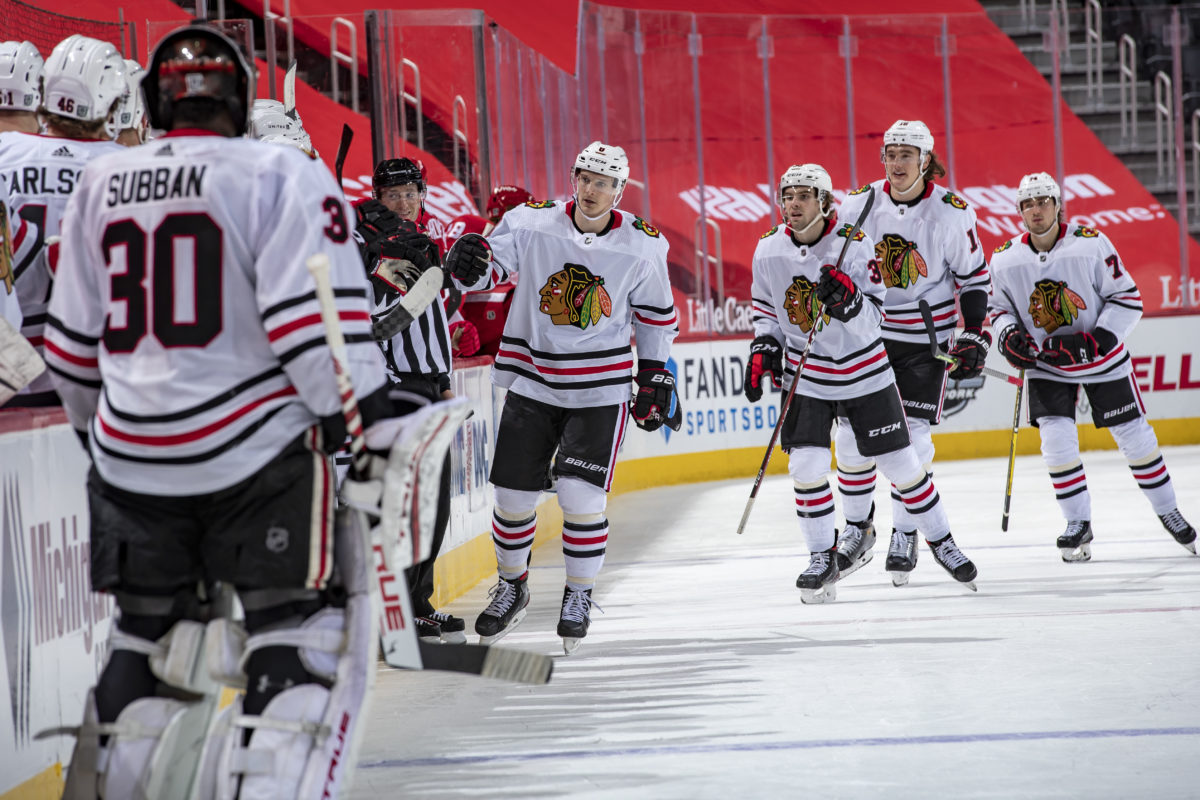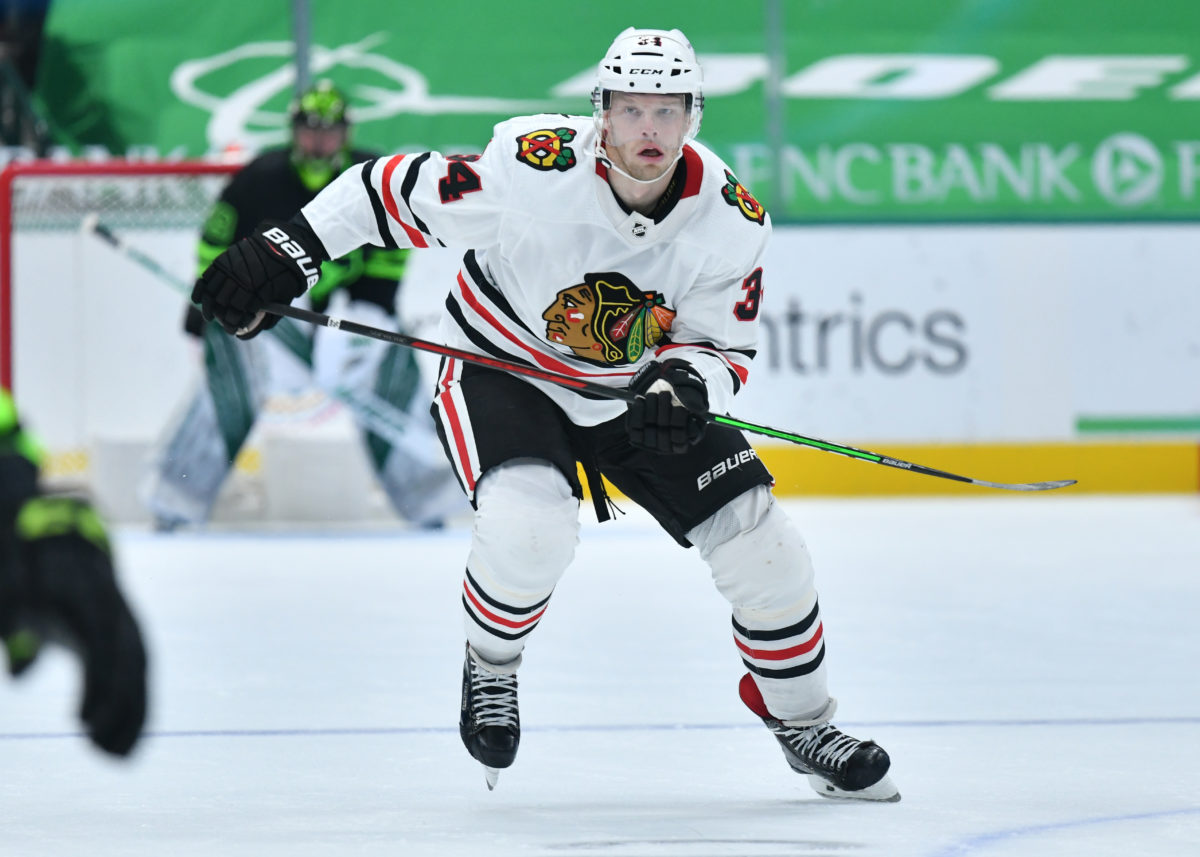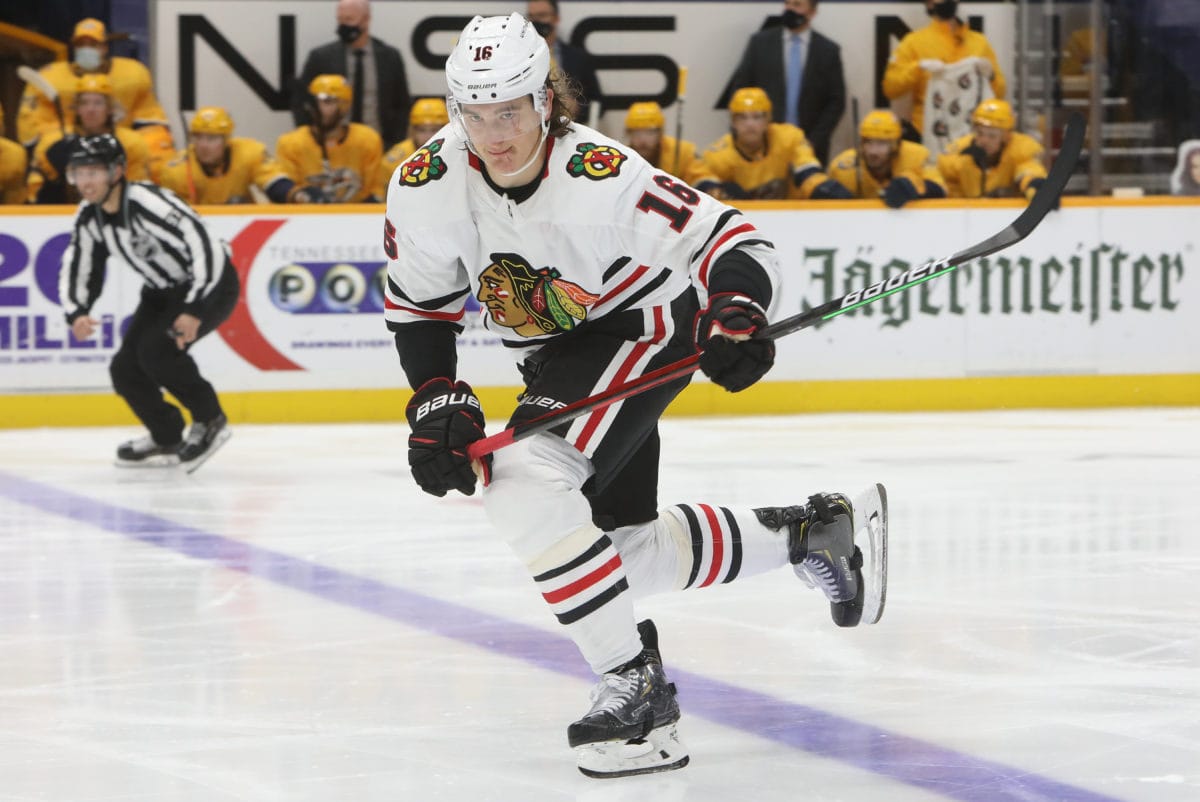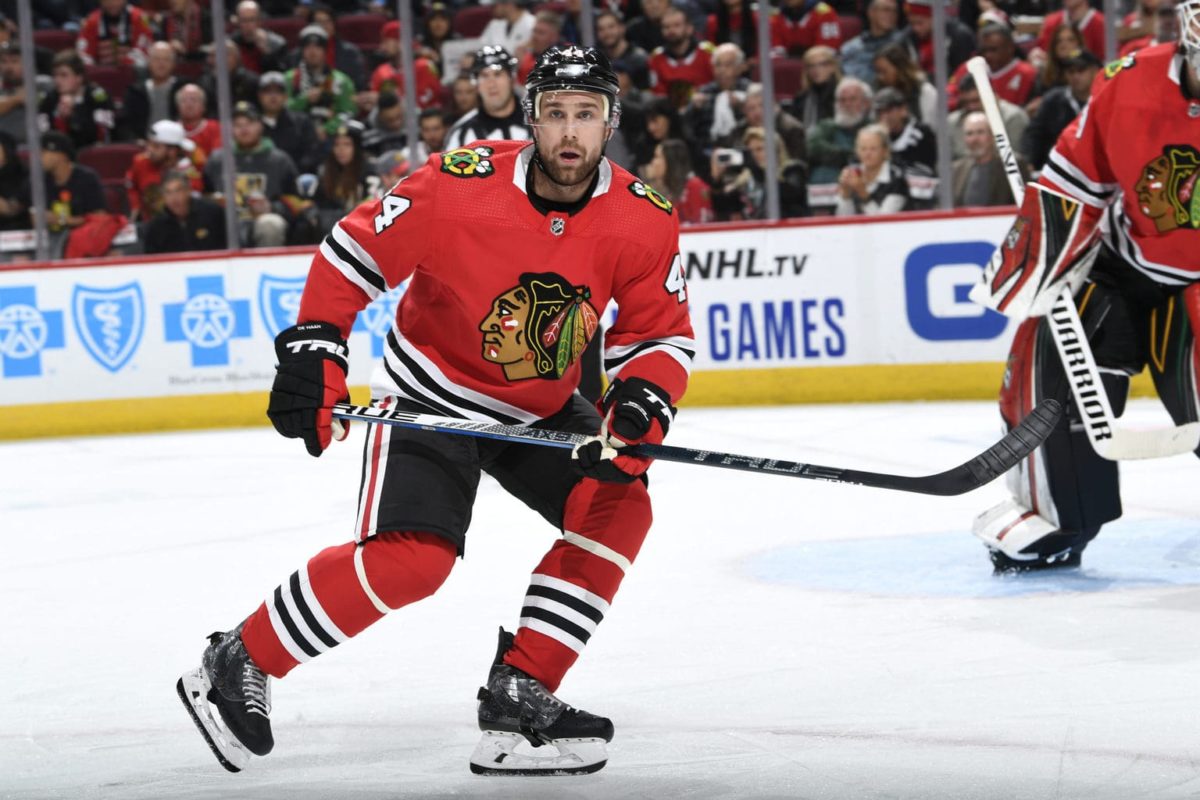The options are seemingly endless as to who will end up where before the clock strikes 3:00 p.m. ET on Monday, April 12. It’s often pretty clear which teams are buyers looking to add that missing piece while those at the other end of the standings are ready to sell for future gains.
Then there are the franchises that fall somewhere in the middle. On the brink of a playoff berth, they are forced to debate whether it would be in their best interest to narrow their perspective to today or open up to offers that could improve their tomorrow.

As interesting as their season has been, the Chicago Blackhawks are an anomaly heading into the trade deadline. They are in a position to benefit from both sides: selling to gain prospects and picks while remaining focused on succeeding this season. If they can manage their dealings strategically, that is.
What They Need Now
The Blackhawks are in the midst of a rebuild, not as a result of a disgruntled fanbase proclaiming it to be so but because the organization told us so this past offseason. Yet, they have performed like a much more experienced team than most of their roster actually is.
What does a team battling for the last playoff spot in their division do at the deadline? If they have been focused on developing over the past few years, to the point where they can make a push, perhaps management should negotiate moves necessary to acquire missing pieces. But that’s not the 2020-21 Blackhawks.
This roster has succeeded beyond expectations this season. While adding players is a more fun alternative, it shouldn’t cloud management’s judgement as to what’s necessary for the team to be successful for years to come. The Blackhawks shouldn’t change their long-term mandate because of their surprising short-term success. They need to stay the course and focus on their future.
How Chicago does that is simple. They must leave their youth intact to continue progressing as they are, and grant even more opportunities to those players to support their development.
Finding additional ice time for their rookies will be easier after they strategically sell some big-minute veterans. Those players won’t be as missed by the Blackhawks and could be the difference-maker for many teams. In return, Chicago needs to focus on picks and prospects to reach their potential in the future. If executed properly, they could still find themselves battling for a bonus playoff berth even after some of their key pieces have been moved to help other teams do the same.
Let’s explore three such trade chips.
Carl Söderberg
Carl Söderberg appeared to be added center depth when he signed one-year deal in December 2020. The 35-year-old could also help mentor those with less experience. Soon after he joined the club, Jonathan Toews was out of the lineup, so it started to make more sense why this experienced centreman was brought in.

Chicago has dressed their fair share of centres this season, including some who play multiple positions and can be slotted in or out as needed. Also, Kirby Dach being back means they have even more options at the dot. Söderberg will be an unrestricted free agent this offseason and there isn’t any reason for a rebuilding squad to re-sign him as he enters his 10th year in the league.
It’s not as though he hasn’t performed. He is one of only two Blackhawks with a winning face-off percentage and his 14 points through 33 contests are in line with his career pace. Söderberg still fulfills a need that many teams might covet, but Chicago has others who can step up in his absence. At a $1 million cap hit, I expect his name to generate some interest.
Nikita Zadorov
The fact that Nikita Zadorov was acquired in yet another move involving Brandon Saad should have foreshadowed that the Blackhawks would receive less value than their trade partner. It also seemed odd to infuse a 25-year-old veteran into a system that had just claimed they were ready to let their prospects play.

That said, Zadorov can still be considered young and might have provided the leadership Chicago’s inexperienced blue line was expected to require this season. Unfortunately, he has failed to find a fit, looking more lost than found through most of this season. It’s actually appeared as though Chicago’s youth have helped compensate for his mistakes, more often than not.
He is simply not playing up to his $3.2 million paycheque. His 6-foot-6, 235-pound frame wasn’t brought in to score. Zadorov leads the team in hits and penalty minutes, sitting fourth in blocked shots. Logging nearly 19:00 a night, he can manage a hefty workload. His attributes would directly address a physical presence other clubs may lack.
Calvin de Haan
In his second season with the Blackhawks, Calvin de Haan is in the midst of a four-year contract worth $4.55 million per season. Acquired in the 2019 offseason trade with the Carolina Hurricanes, de Haan arrived as the type of defenseman who could do a bit of everything. He can block, hit, add a few points, and can play on the right or left side.

As a 29-year-old at the start of a season paved for prospect development, de Haan was expected to be a leader in the room, and he has been. Unfortunately, his style may be more of a hindrance than a help to the team’s blossoming blue line.
It’s tough to justify de Haan’s salary when the rookies he’s mentoring are already playing at levels that don’t require his guidance. Besides, a team with Patrick Kane and Duncan Keith is not short on leadership. Yet, there are countless clubs that would benefit from adding an experienced, versatile veteran defenseman who can log over 20:00 per night.
Making the Best of It
If the Blackhawks can find the right buyers for what they are willing to sell, the end goal can be more than just picks and prospects that shape their future. That would be the best return for a rebuilding team, and the lineup would still be full of talent trying to win now.
Leveraging the value of proven players would also open up playing time for the young players who would be left to fill out the roster, and they have already been major contributors towards Chicago’s surprising success to date.
So, why not let them have even more runway to work with to see how much further their most impactful rookies can take the team and perhaps be even more competitive down the stretch. All the while, the organization will have gained further assets for the future in return for trading their veterans.
Management should sell off those who will likely walk in due time anyway. Clear up that coveted cap space. Let the youth continue proving they belong. Empower them to reach a higher level. Remind them that the Blackhawks are now better set for tomorrow, but they have the rest of this season to continue to surprise and surpass expectations.
The best of both worlds is possible for the 2020-21 Blackhawks.